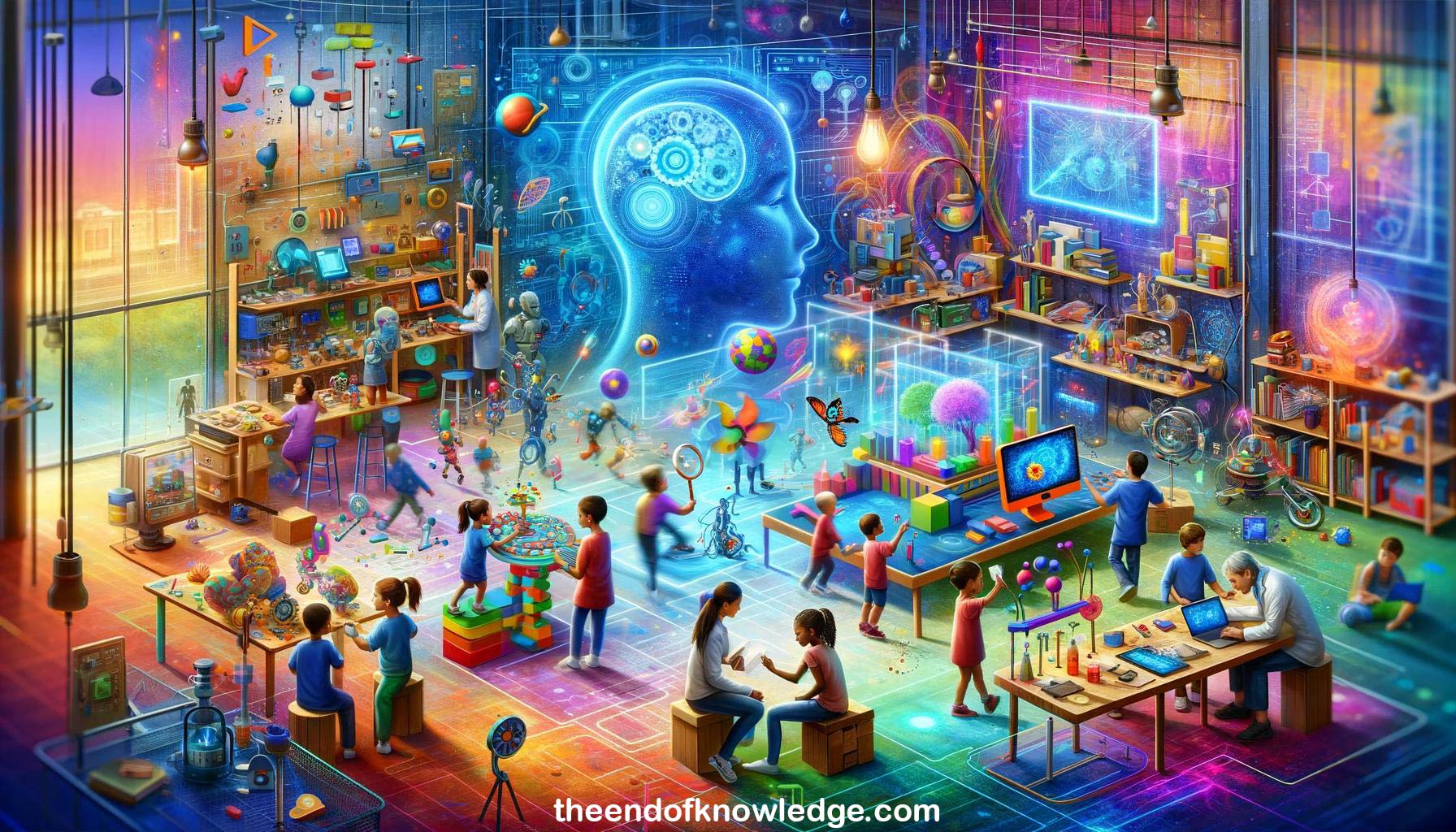 >
>
Concept Graph & Resume using Claude 3 Opus | Chat GPT4 | Gemini Adv | Llama 3:
Resume:
1.-The workshop bridges AI and cognitive science, exploring their shared history and potential for collaboration.
2.-Play and exploration in children supports learning by helping build better models of the world.
3.-Children's play is sophisticated from the start, integrating social cues and reasoning counterfactually.
4.-Experiments show children's exploratory play quantitatively tracks the discriminability of contrasts.
5.-Children's play involves making up arbitrary problems and inventing solutions to bootstrap new ideas and plans.
6.-The hard problem in cognition is thinking and generating new hypotheses, not just learning.
7.-Problems contain information that constrains the search space for solutions even before having the answers.
8.-Children violate rational action principles in play to create novel goals by hacking their utility functions.
9.-AI researchers should understand development, caregiving, diversity of cognition and purposes beyond task performance from cognitive science.
10.-Cognitive scientists should understand the variety of tools and approaches in AI beyond just neural networks.
11.-Natural experiments are proposed to understand innate knowledge, approximations, modularity, spatial reasoning in humans for informing AI.
12.-Leslie Kaelbling discusses pursuing shared principles between AI and natural intelligence while acknowledging differences.
13.-Young children and RL agents are compared exploring the same virtual environment to study efficient exploration.
14.-Autism-inspired AI looks at how atypical visual and social reasoning abilities can inform cognitive modeling.
15.-Visual spatial reasoning is modeled using visual imagery operations in a hierarchical process inspired by cognitive theories.
16.-Public self-consciousness modeled using an imaginary listener improves consistency in dialogue agents without additional annotation.
17.-Brain-inspired replay combining generative feedback and context-dependent gating reduces catastrophic forgetting in neural networks.
18.-Global-local networks using sparse depth cues learn 3D scene perception in a baby-like way through vision and interaction.
19.-A Kalman filter applied to the successor representation enables flexible value computation and transition revaluation.
20.-Eigenvectors of the SR matrix support hierarchical representation and temporally abstract exploration in a grid cell model.
21.-The hippocampus supports key cognitive functions difficult for AI - episodic memory, model-based planning, task-switching, imagination.
22.-Standard RL optimality criteria give way to natural decision making under resource constraints in a cognitive model.
23.-Sketch-object correspondence relies on high-level visual features and social reasoning to communicate relevant information efficiently.
24.-Learning object-sketch mappings that expose analogical structure is a challenge for current visual reasoning systems.
25.-Entropy regularization emerges in signaling games, leading to efficient communication that transmits only necessary information.
26.-Product-Kanerva memories enable compression, binding, relational learning and selective reconstruction of objects in a neural network.
27.-Continuous relaxation of graph matching enables knowledge transfer in analogical reasoning, qualitatively matching human asymmetries.
28.-Marr's levels of analysis help disentangle assumptions and focus debates at the right level in AI research.
29.-Mouse visual cortex responses are best predicted by models capturing edges/segments rather than supervised object recognition features.
30.-Acoustic word embeddings exhibit properties like onset bias and encode phonetic features similar to human percepts.
Knowledge Vault built byDavid Vivancos 2024